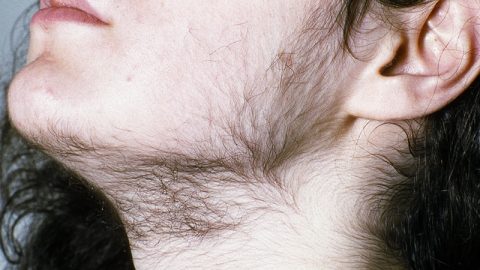What happens during a menstrual cycle?
The ovaries are two small organs, approximately the same as the size of your thumb, and are located in the female pelvis. The ovaries are close to the uterus, one on each side, near the opening of the fallopian tube. The ovaries comprise of the female ovum cell, called the oocyte. In non-medical terms, it is known as the “Egg.” The ovaries are filled with follicles. They are fluid-filled structures in which the egg grows to maturity. Every month the pituitary gland secretes FSH (follicle stimulating hormones) and LH (Luteinizing hormones) hormones into the blood, these hormones direct the function of the ovaries. Once they reach the ovaries, the immature eggs start to mature and release estrogen. As the level of estrogen in the blood increases, the LH causes the most mature follicle to open and release the egg, and this is called ovulation.
The free egg travels through the fallopian tube and awaits fertilization. If not fertilized, the egg and lining of the uterus are shed in the next cycle. In Polycystic ovary syndrome, high amount of LH is secreted by the pituitary glands, which results in higher levels of androgens that are male hormones or testosterone in the women’s body. Without regular ovulation and the hormonal events, your uterus does not shed the lining that it has to. The uterus lining has to shed regularly; otherwise, abnormal cells build up into the womb. With the proper guidance of the doctor and the right treatment, the issue of the irregular menstrual cycle or absent periods can be solved.
Irregular menstrual cycle or absent periods is one of the significant symptoms of Polycystic ovary syndrome. The irregular menstrual cycle is observed when there are eight or less than eight menstrual cycles every year. Although some women with PCOS have regular periods, high levels of male hormones androgens (androgens) and extra insulin can disturb the regular cycle of menstruation and ovulation.
Women who have the symptoms of Polycystic ovary syndrome might have an irregular menstrual cycle, or the periods might stop altogether. The average menstrual cycle takes the time of 28 days for the completion of one ovulation when eggs are released. If the menstrual cycle is anywhere between 21 and 35 days, it can be considered ‘normal.’ But an irregular menstrual cycle is defined as either:
- Eight or less menstrual cycles per year
- Menstrual cycles longer than 35 days
As you know, the exceptions are always there; There are women with PCOS who might experience heavier or lighter bleeding during their menstrual cycle.
Why is the irregular menstrual cycle not considered as a good sign?
The regular menstrual cycle helps in preventing the lining of the uterus (womb) from getting extra thick. If the extended duration of the gaps between periods can lead to abnormal cells building inside the womb, it is significant for a normal woman to have at least four menstrual cycles per year to avoid a buildup that may include abnormal cells. Irregular menstrual cycle disturbs the procedure of ovulation and egg formation, which is most important for a woman to get pregnant.
Treatment options to solve the problem of the irregular menstrual cycle:
- Hormonal contraceptive medications: A low-dose oral contraceptive pill (‘the pill’)
Your doctor can prescribe oral contraception pills to help you in regulating your menstrual cycle. The medicine can also reduce menstrual cramps, acne, and excess facial and body hair growth. These medications include:
- Progesterone: This helps to stimulate the uterus and encourages bleeding
- Hormonal implants
- Vaginal contraceptive rings
- Intra-uterine devices containing progesterone
The estrogen and progesterone in hormonal contraception medication act to dominate the standard hormonal control of the menstrual cycle and ovulation. The oral contraceptive pill effects by ‘switching off the ovaries off,’ which means, when a woman is taking the medication, the release of hormones like testosterone is reduced excessively. The medicine also upsurges the release of sex hormone-binding globulin (SHBG), which fixes to the most essential, androgen testosterone in the blood. This decreases the action of testosterone and reduces the symptoms of male hormone or androgen excess. Some oral contraceptive pills also comprise small amounts of anti-androgens, which object to block the properties of testosterone and other hormones that are similar.
Possible side effects and the risks involved:
Some of the common side effects linked with contraceptive medication consist of:
- mood swings
- excessive weight gain or loss
- swelling
- breast tenderness
- irregular bleeding
These side effects can differ depending on the estrogen and progesterone content of the pill or device.
- The oral contraceptive pills should not be used by the women who have high blood pressure, have a habit of smoking, or other thromboses in the past.
- There are some recent signs stating that contraception can increase insulin resistance, atypical glucose tolerance (an early sign of diabetes), and high cholesterol levels (triglycerides). Usage of a low dose is recommendable
The collective result of hormonal contraception on the long–term health for women with PCOS is not known at present.
Steps you can take
- Choose the best hormonal contraceptive medication, which will give you the best results and a solution to your irregular menstrual cycle. Discuss the options of medication with your doctor. Prioritize what is most important to you and discuss it with your doctor.
Leading a healthy lifestyle is one of the most significant aspects to set yourself free from the symptoms of polycystic ovary syndrome successfully. Losing excess weight will help you reduce the severity of some symptoms. Even an 8-10% weight loss can have substantial health paybacks, including regular menstrual cycles, enhanced mood, fertility, and a reduced risk of diabetes.














